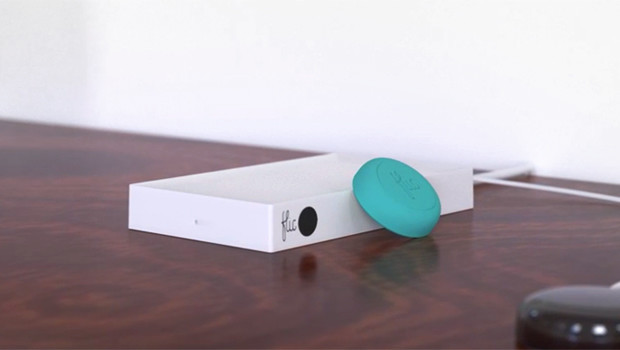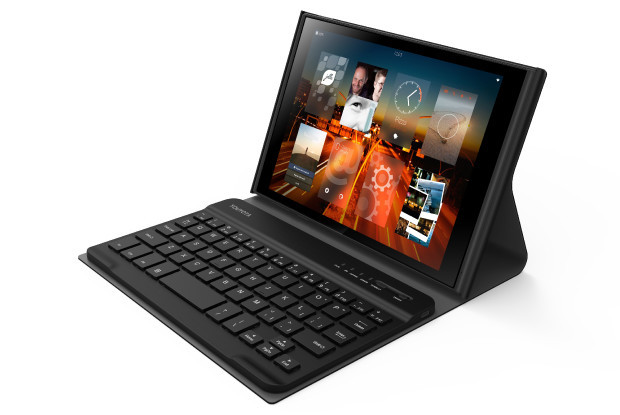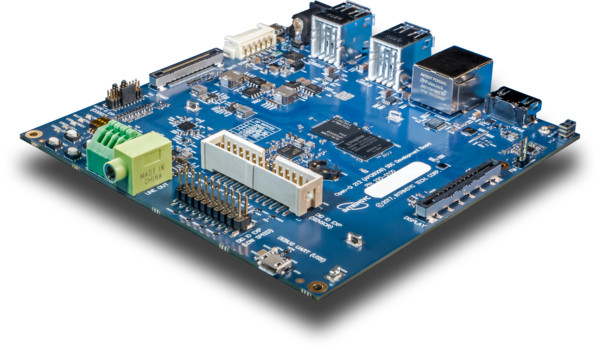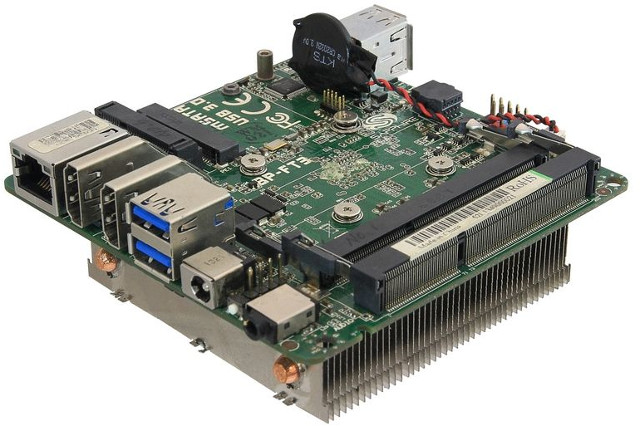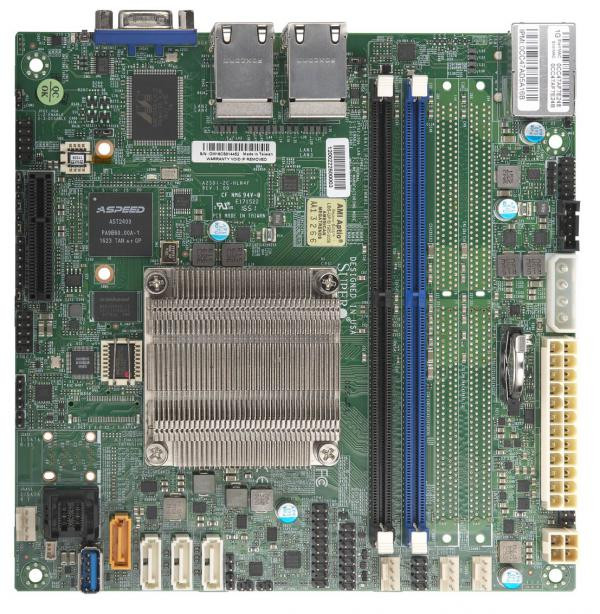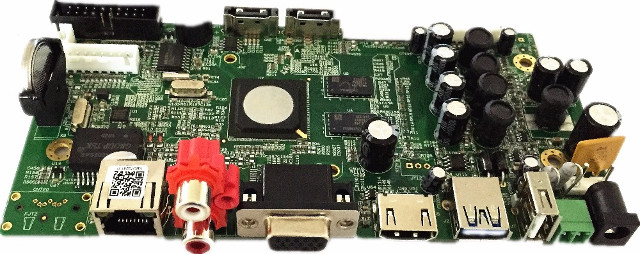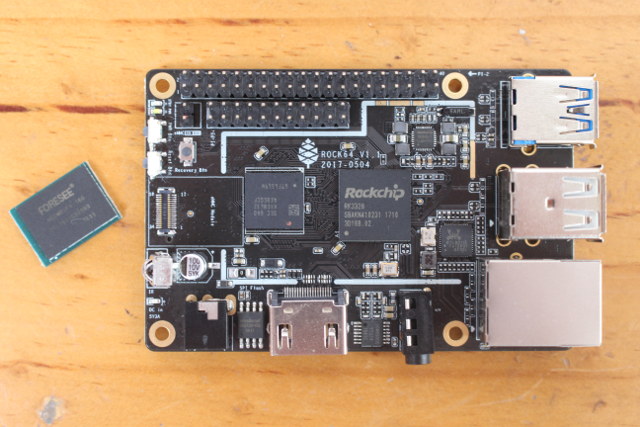This week-end, I wrote about 1btn open source WiFi button that can allow you directly control WiFi appliances, and/or set scenes without the need for a smartphone. We also discussed limitations of WiFi due to high power consumption, security issues and the one-way aspect of RF communication, and that Bluetooth 5 may be a better option for range and battery life if possible. Flic Hub is another way to approach the issue, as it combines Bluetooth LE buttons with a gateway supporting WiFi, Bluetooth, and infrared. Flic Hub gateway specifications: Connectivity – Bluetooth Classic, Bluetooth LE, WiFi, Ethernet, IR via optional add-on accessory. Audio – 3.5mm audio out/mic in Power Supply – 5V via micro USB Power Consumption – 1.5W typ. Security – SPARKE2+ Bluetooth encryption Dimensions – 85 x 50 x 15 mm Weight – 99 grams Users can configure workflows by setting up Flic with IFTTT, Zapier, Microsoft […]
Jolla Tablet Take 2 – Youyouta Tablet Runs Linux Based Sailfish OS 2.1 Operating System (Crowdfunding)
Jolla Tablet running Linux based Sailfish OS was launched in 2014 via Indiegogo, and the campaign was initially very successful having raised over 2.5 million dollars, but eventually it became a disaster as the company had some financial issues, and the tablet was canceled with on a few backers having received their tablet. The company eventually organized a refund program, so it did not end up being as bad as it first seemed. But there’s now a “new” SailFish OS tablet – Youyouta tablet – that has been launched on Indiegogo last month. Jolla is not handling the manufacturing and campaign, and instead it’s done by a third party who is paying license fees to Jolla for Sailfish OS. They re-used most parts of the hardware design from original Jolla tablet plus a few modifications like option for higher storage capacity: SoC – Intel Atom Z3735F quad core “Bay Trail” […]
Qualcomm Snapdragon 212 Boards – Intrinsyc Open-Q 212 and Kaynes Technology SKATE-212
Qualcomm Snapdragon 212 (APQ8009) quad core Cortex A7 processor is used in entry-level smartphones, but it’s also one of the processors which the company expects to use in their Smart Speaker Platform leveraging Google Assistant, Amazon Alexa, and other A.I. voice services. Two company has designed single board computers that can be used for this purpose: Intrisync Open-Q 212 and Kaynes Technology SKATE-212. Intrisync Open-Q 212 SBC Development Board Contrary to some other Open-Q boards, but not all, Open-Q 212 is not comprised of a baseboard and a system-on-module, as everything is soldered on a single PCB. Open-Q 212 specifications: SoC – Qualcomm Snapdragon 212 (APQ8009) quad core ARM Cortex A7 processor @ 1.267GHz with Adreno 304 GPU, QDSP6 DSP System Memory – 1GB LPDDR3 Storage – 8GB eMMC (non-POP) flash and micro SD card socket Connectivity – Ethernet, pre-scanned Wi-Fi 802.11n 2.4Ghz (WCN3610) with chip and U.FL antennas, Bluetooth 4.1 […]
$89 Sapphire BP-LX210KL Board is Powered by AMD G-Series LX Dual Core Processor
Mentor Embedded will regularly organize webinars to show how to use or leverage their embedded Linux distribution, but their latest upcoming webinar entitled “Deploying Embedded Linux on an AMD LX-based sub-$100 Sapphire LX210 board” caught my eyes simply because there aren’t that many low cost AMD boards. The only ones I can think of are Gizmo 2 board sold for $200, as well as some PC Engines boards starting at $106 and mainly designed for headless applications. It took me several attempts on DuckDuckGo and Google, before finding Sapphire LX 210 product page. It’s even unclear how the board is called, as the company refers to it as BP-LX210KL at times, and BP-FT3bGS or BP-210KL in other instances. Preliminary specifications: SoC – AMD G-series LX210 dual core processor with Radeon GPU supporting DirectX 11.1, OpenGL 4.2 and OpenCL.2 manufactured using 28nm process technology System Memory – 2x DDR3 SO-DIMM up to […]
Supermicro A2SDi-2C-HLN4F Server Mini-ITX Motherboard is Based on Intel Atom C3338 “Denverton” Processor
Almost exactly one year ago, I wrote about Intel Atom C3000 Series “Denverton” processor based on the same Goldmont architecture used in Apollo Lake processor, and used in an early GIGABYTE MA10-ST0 server motherboard prototype. The latter is not out yet, but according to a YouTube video, the 16-core motherboard should be launched in H2 2017. In the meantime, Supermicro also made their own Denverton motherboard based on a lower-end Atom C3338 dual core processor. Supermicro A2SDi-2C-HLN4F board specifications: Processor – Intel Atom C3338 dual core Denverton processor @ 1.50 / 2.20 GHz with 4 MB cache; 9W TDP System Memory Up to 64GB Register DIMM RDIMM and DDR4-1866MHz Up to 32GB Unbuffered ECC/non-ECC UDIMM, DDR4-1866MHz, in 2 DIMM slots Storage – 4x SATA 3 ports, but up to 8x SATA 3 (6 Gbps) ports are configurable; N.B.: total combined PCI-E lanes and SATA ports is up to 8 Connectivity […]
$45 Hisilicon Hi3535 Based Network Video Recorder Board Comes with HDMI, VGA, Dual SATA, GbE, and USB 3.0 Ports
Network Video Recorder (NVR) boards allow you to record videos from IP cameras to a SATA drive, and display them in a mosaic for monitoring & security. One of such boards is XiongMai NBD7024T-P powered by a Hisilicon Hi3535 dual core Cortex A9 processor, and featuring Gigabit Ethernet, SATA, and USB 3.0 interfaces, on top of HDMI and VGA video output and stereo audio output. With such features, this type of board could likely be re-purposed for other applications, such as a NAS setup too,and they are fairly inexpensive going for $45 including shipping on Aliexpress. NBD7024T-P NVR board specifications: SoC – Hisilicon Hi3535 dual core Cortex A9 processor @ 1.0 GHz System Memory – 4Gbit (512MB) RAM Storage – 2x SATA ports up to 8TB each, maybe some SPI flash for firmware Video Output – 1x HDMI, 1x VGA Audio Output – 2x RCA jacks for stereo audio Video […]
ROCK64 and UDOO X86 Boards and Accessories are Now Available for Purchase
Pine64 ROCK64 is a development board powered by Rockchip RK3328 quad core processor, while UDOO X86 board is based on Intel Atom x5-E8000 or Celeron N3160 processor plus a Quark SE MCU. What do they have common? Not much, except both boards are now officially available for sale. Just a quick reminder of the specifications for ROCK64 board: SoC – Rockchip RK3328 quad core Cortex A53 processor with ARM Mali-450MP2 GPU System Memory – 1, 2, or 4 GB LPDDR3 Storage – eMMC flash module socket + micro SD card slot + 128 Mbit SPI flash Video & Audio Output – HDMI 2.0a up to 4K @ 60 Hz with HDR10 and HLG support, 3.5mm AV port (composite video + stereo audio) Video Codec – 4K VP9, H.265 and H.264, 1080p VC-1, MPEG-1/2/4, VP6/8 Connectivity – Gigabit Ethernet USB – 2x USB 2.0 ports, 1x USB 3.0 port Expansion Headers […]
Linux 4.12 Release – Main Changes, ARM & MIPS Architectures
Linus Torvalds has just released Linux 4.12: Things were quite calm this week, so I really didn’t have any real reason to delay the 4.12 release. As mentioned over the various rc announcements, 4.12 is one of the bigger releases historically, and I think only 4.9 ends up having had more commits. And 4.9 was big at least partly because Greg announced it was an LTS kernel. But 4.12 is just plain big. There’s also nothing particularly odd going on in the tree – it’s all just normal development, just more of it that usual. The shortlog below is obviously just the minor changes since rc7 – the whole 4.12 shortlog is much too large to post. In the diff department, 4.12 is also very big, although the reason there isn’t just that there’s a lot of development, we have the added bulk of a lot of new header files […]


